Abstract
Samples of serum, bile, and urine were collected simultaneously from patients with cholestasis of varying aetiology and from patients with cirrhosis; their bile acid composition was determined by gas/liquid chromatography and mass spectrometry. In cholestasis, the patterns in all three body fluids differed consistently and strikingly. In serum, cholic acid was the major bile acid and most bile acids (greater than 93%) were unsulphated, whereas, in urine, chenodeoxycholic was the major bile acid, and the majority of bile acids (greater than 60%) were sulphated. Secondary bile acids were virtually absent in bile, serum, and urine. The total amount of bile acids excreted for 24 hours correlated highly with the concentration of serum bile acids; in patients with complete obstruction, urinary excretion averaged 71-6 mg/24 h. In cirrhotic patients, serum bile acids were less raised, and chenodeoxycholic acid was the predominant acid. In healthy controls, serum bile acids were consistently richer in chenodeoxycholic acid than biliary bile acids, and no bile acids were present in urine. No unusual monohydroxy bile acids were present in patients with primary biliary cirrhosis, but, in several patients, there was a considerable amount of hyocholic acid present in the urinary bile acids. The analyses of individual bile acids in serum and urine did not appear to provide helpful information in the differential diagnosis of cholestasis. Thus, in cholestasis, conjugation of chenodeoxycholic acid with sulphate becomes a major biochemical pathway, urine becomes a major route of bile acid excretion, and abnormal bile acids are formed.
Full text
PDF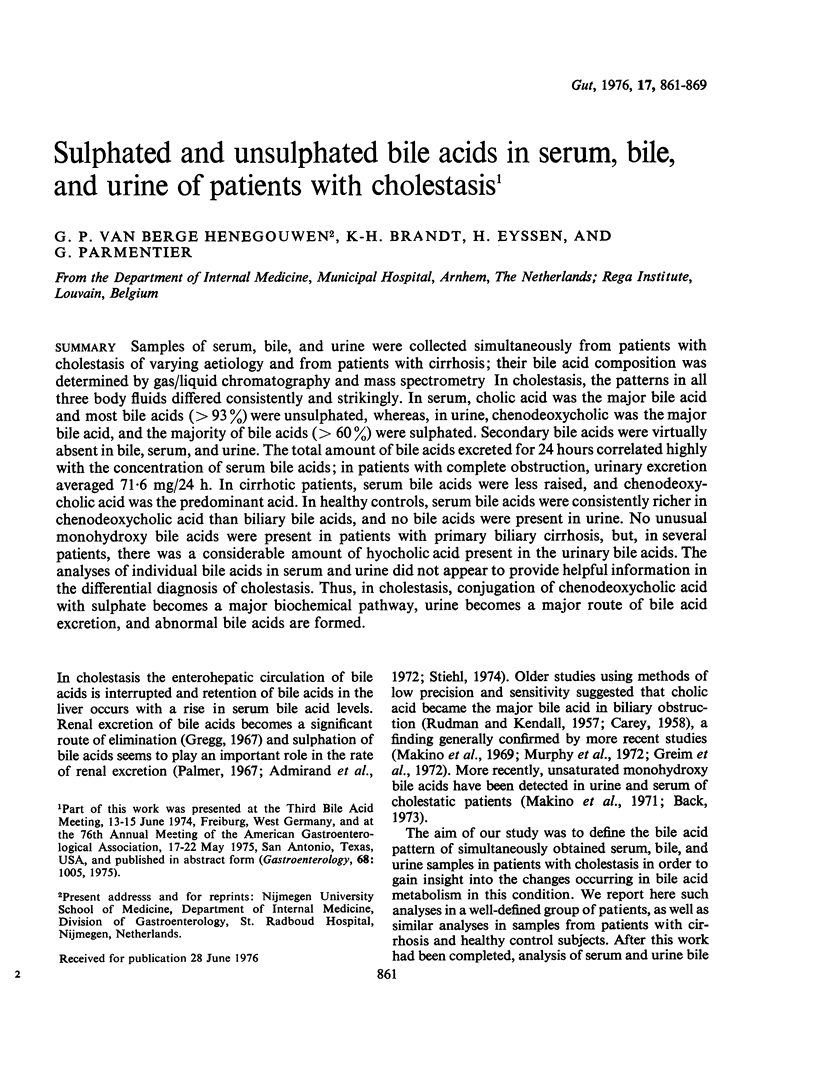
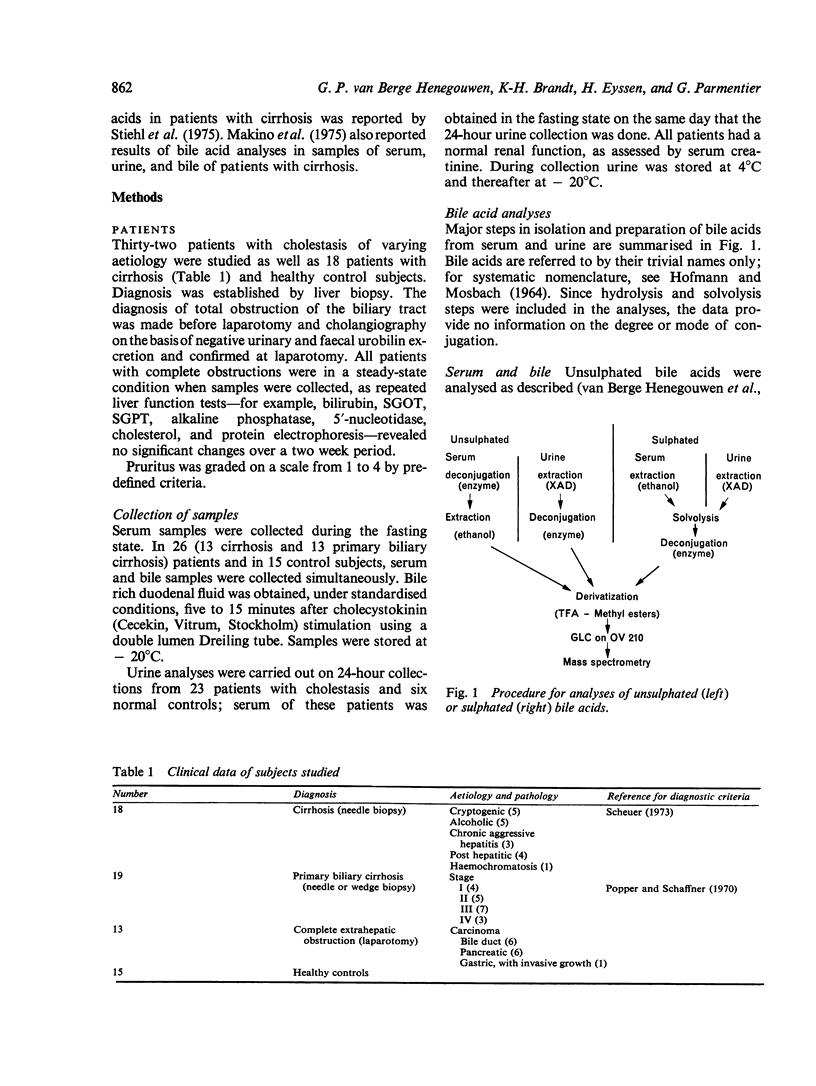
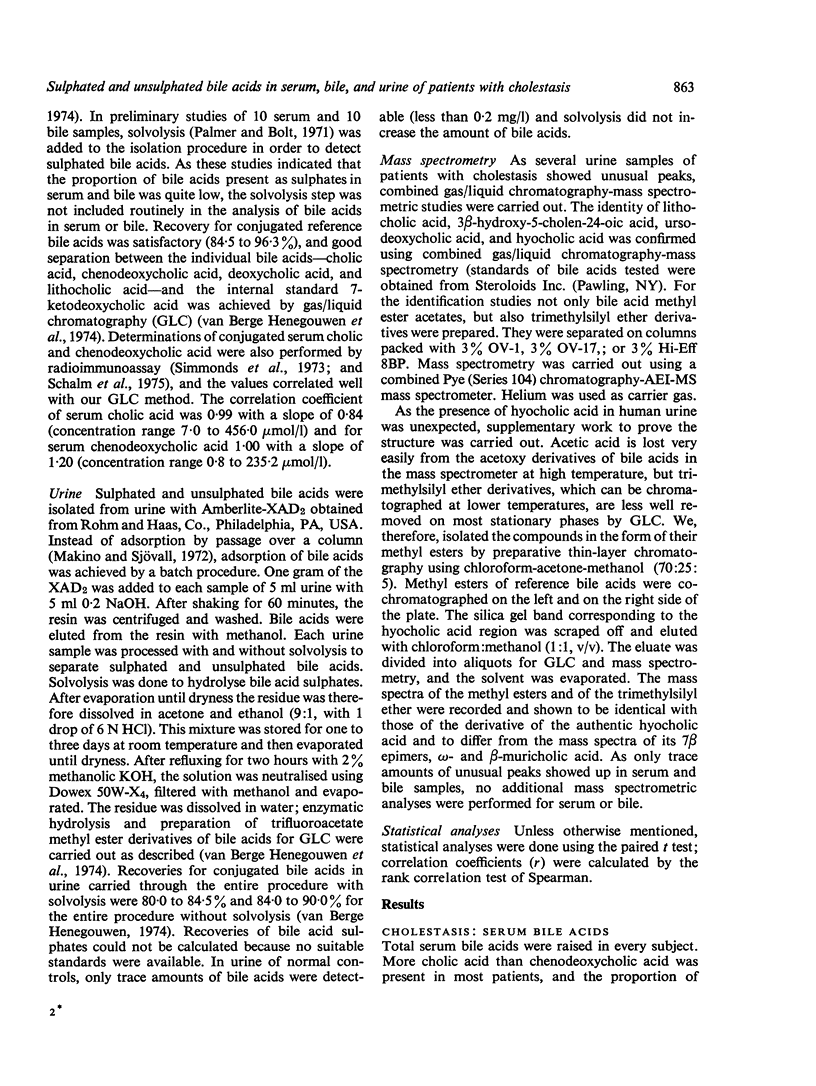
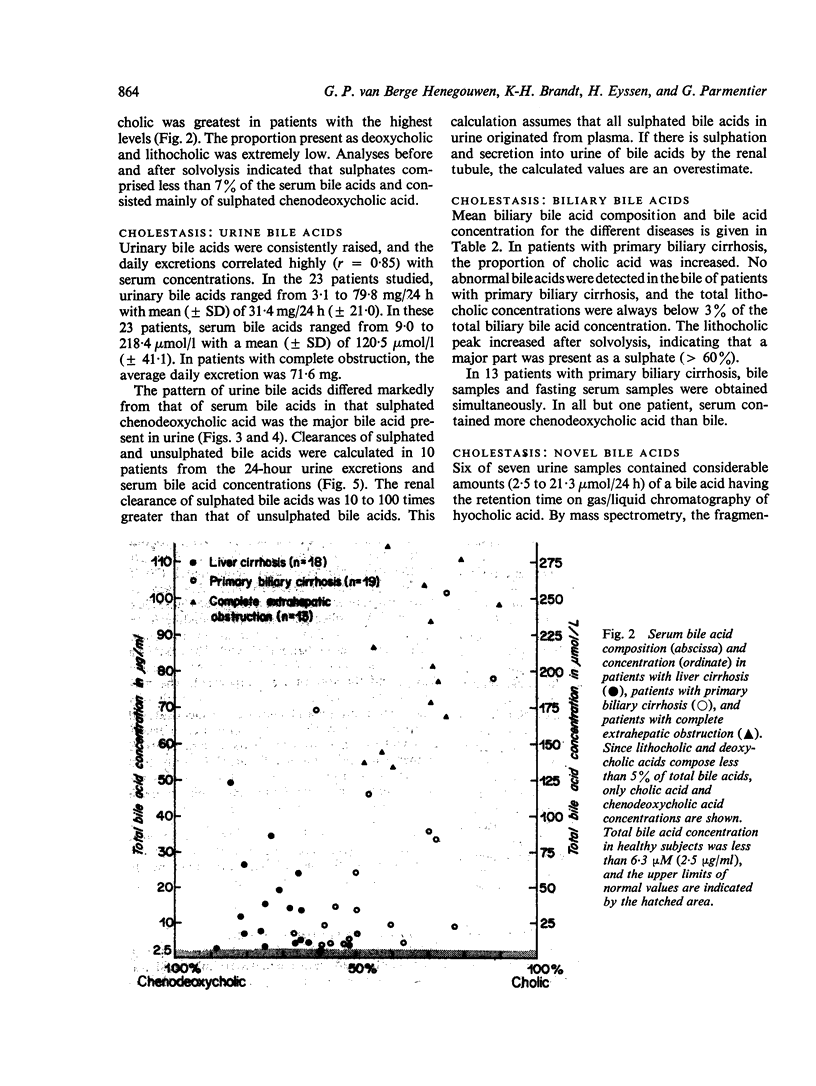
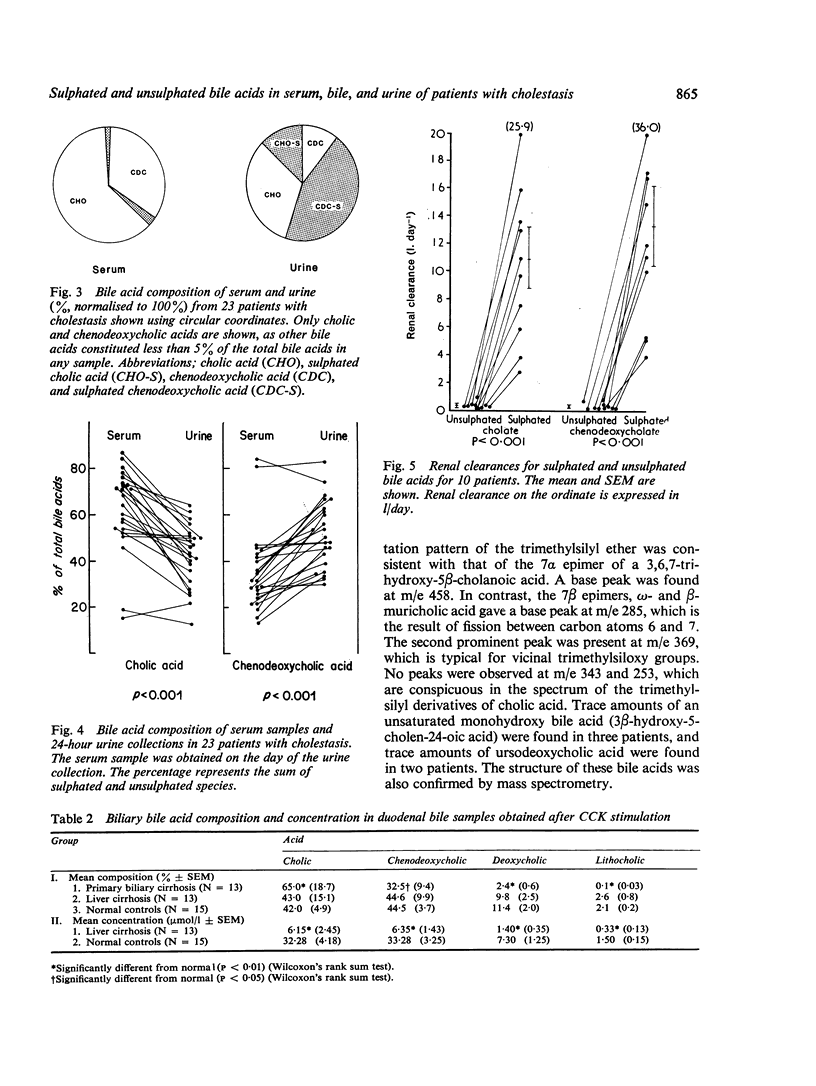
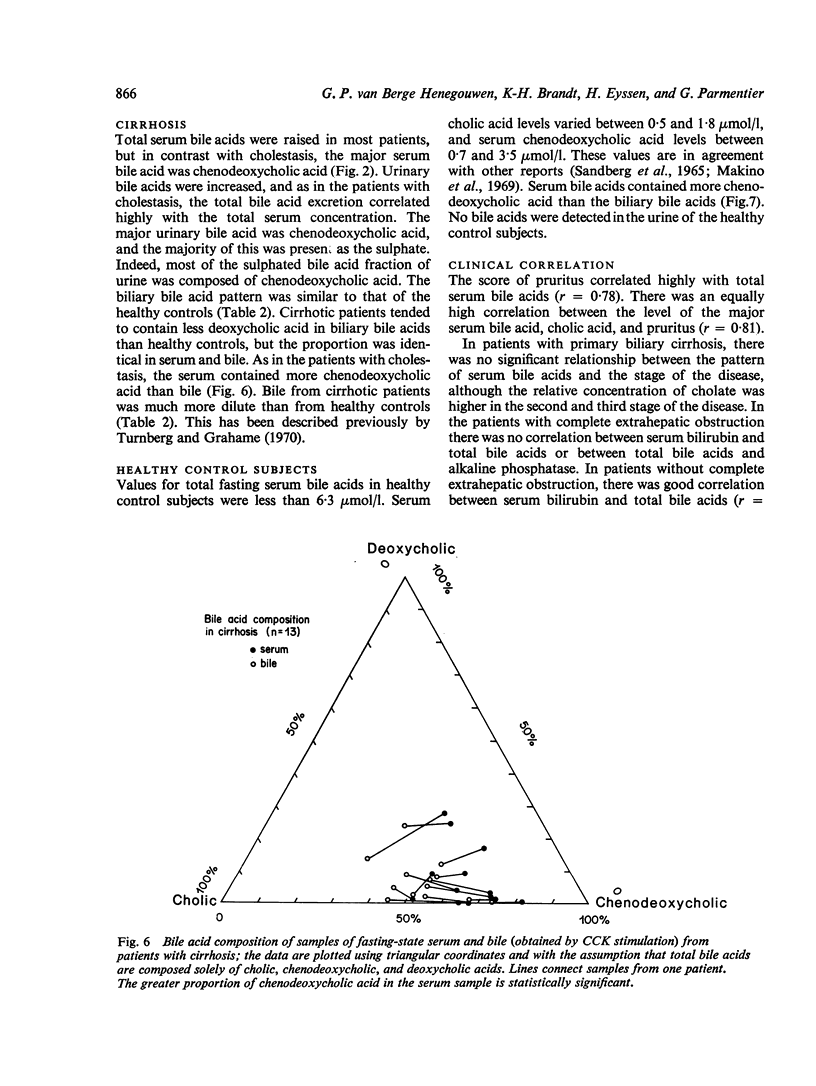
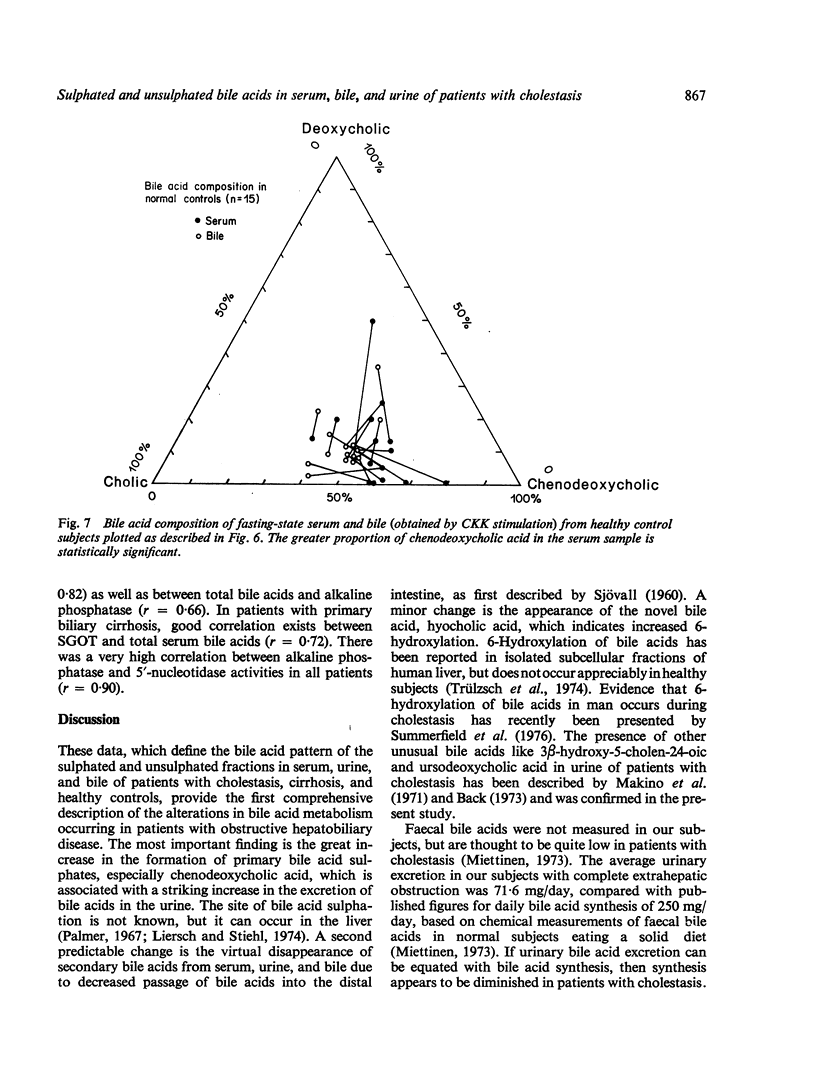
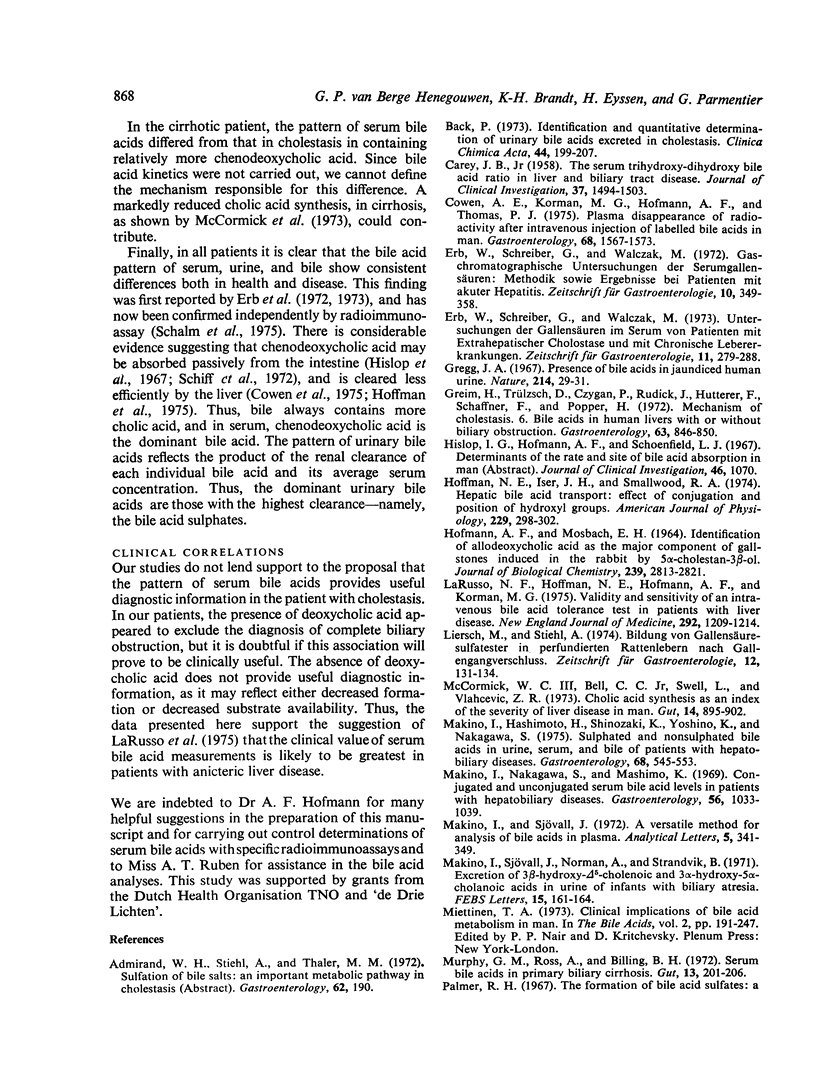
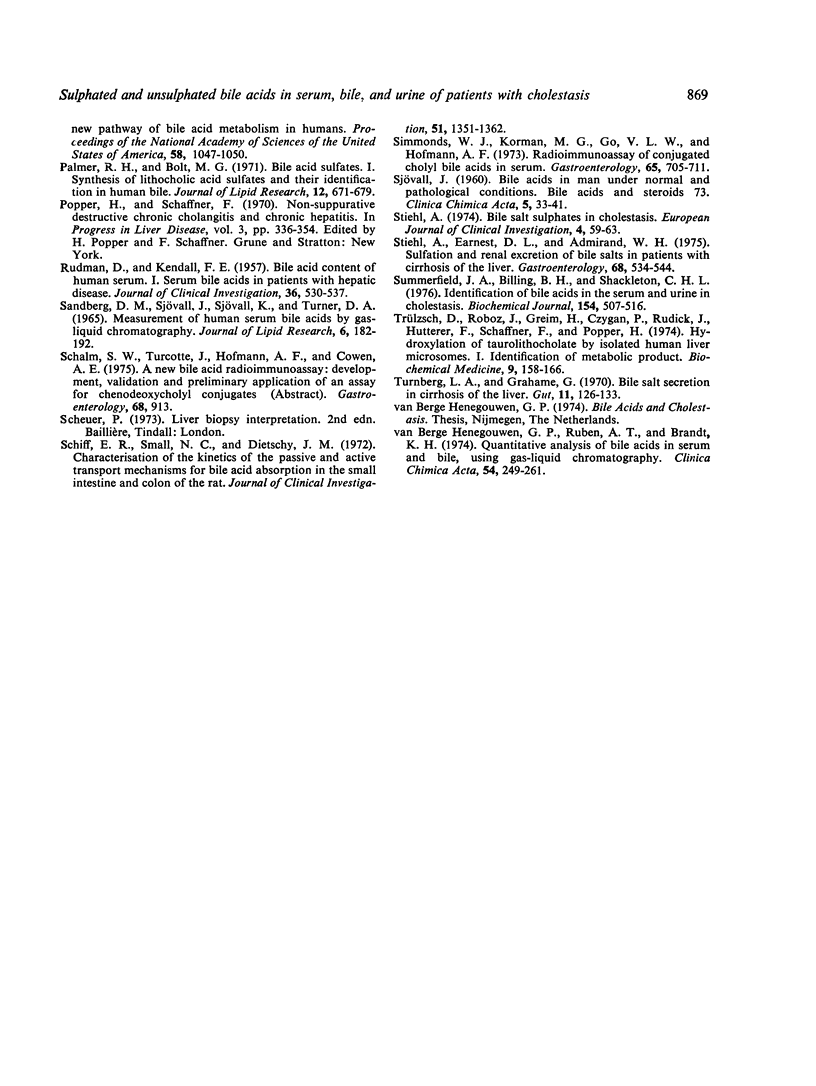
Selected References
These references are in PubMed. This may not be the complete list of references from this article.
- Back P. Identification and quantitative determination of urinary bile acids excreted in cholestasis. Clin Chim Acta. 1973 Mar 14;44(2):199–207. doi: 10.1016/0009-8981(73)90382-3. [DOI] [PubMed] [Google Scholar]
- CAREY J. B., Jr The serum trihydroxy-dihydroxy bile acid ratio in liver and biliary tract disease. J Clin Invest. 1958 Nov;37(11):1494–1503. doi: 10.1172/JCI103741. [DOI] [PMC free article] [PubMed] [Google Scholar]
- Cowen A. E., Korman M. G., Hofmann A. F., Thomas P. J. Plasma disappearance of radioactivity after intravenous injection of labeled bile acids in man. Gastroenterology. 1975 Jun;68(6):1567–1573. [PubMed] [Google Scholar]
- Erb W., Schreiber J., Walczak M. Untersuchungen der Gallensäuren im Serum von Patienten mit extrahepatischer Cholostase und mit chronischen Leberekrankungen. Z Gastroenterol. 1973 May;11(4):279–288. [PubMed] [Google Scholar]
- Erb W., Schreiber W. E., Walczak M. Gaschromatographische Untersuchungen der Serumgallensäuren: Methodik sowie Ergebnisse bei Patienten mit akuter Hepatitis. Z Gastroenterol. 1972;10(5):349–358. [PubMed] [Google Scholar]
- Gregg J. A. Presence of bile acids in jaundiced human urine. Nature. 1967 Apr 1;214(5083):29–31. doi: 10.1038/214029a0. [DOI] [PubMed] [Google Scholar]
- HOFMANN A. F., MOSBACH E. H. IDENTIFICATION OF ALLODEOXYCHOLIC ACID AS THE MAJOR COMPONENT OF GALLSTONES INDUCED IN THE RABBIT BY 5-ALPHA-CHOLESTAN-3-BETA-OL. J Biol Chem. 1964 Sep;239:2813–2821. [PubMed] [Google Scholar]
- Hoffman N. E., Iser J. H., Smallwood R. A. Hepatic bile acid transport: effect of conjugation and position of hydroxyl groups. Am J Physiol. 1975 Aug;229(2):298–302. doi: 10.1152/ajplegacy.1975.229.2.298. [DOI] [PubMed] [Google Scholar]
- LaRusso N. F., Hoffman N. E., Hofmann A. F., Korman M. G. Validity and sensitivity of an intravenous bile acid tolerance test in patients with liver disease. N Engl J Med. 1975 Jun 5;292(23):1209–1214. doi: 10.1056/NEJM197506052922303. [DOI] [PubMed] [Google Scholar]
- Liersch M., Stiehl A. Bildung von Gallensäuresulfatestern in perfundierten Rattenlebern nach Gallengangsverschluss. Z Gastroenterol. 1974 Mar;12(2):131–134. [PubMed] [Google Scholar]
- Makino I., Hashimoto H., Shinozaki K., Yoshino K., Nakagawa S. Sulfated and nonsulfated bile acids in urine, serum, and bile of patients with hepatobiliary diseases. Gastroenterology. 1975 Mar;68(3):545–553. [PubMed] [Google Scholar]
- Makino I., Nakagawa S., Mashimo K. Conjugated and unconjugated serum bile acid levels n patients with hepatobiliary diseases. Gastroenterology. 1969 Jun;56(6):1033–1039. [PubMed] [Google Scholar]
- Makino I., Sjövall J., Norman A., Strandvik B. Excretion of 3beta-hydroxy-5-cholenoic and 3a-hydroxy-5a-cholanoic acids in urine of infants with biliary atresia. FEBS Lett. 1971 Jun 10;15(2):161–164. doi: 10.1016/0014-5793(71)80047-9. [DOI] [PubMed] [Google Scholar]
- McCormick W. C., 3rd, Bell C. C., Jr, Swell L., Vlahcevic Z. R. Cholic acid synthesis as an index of the severity of liver disease in man. Gut. 1973 Nov;14(11):895–902. doi: 10.1136/gut.14.11.895. [DOI] [PMC free article] [PubMed] [Google Scholar]
- Murphy G. M., Ross A., Billing B. H. Serum bile acids in primary biliary cirrhosis. Gut. 1972 Mar;13(3):201–206. doi: 10.1136/gut.13.3.201. [DOI] [PMC free article] [PubMed] [Google Scholar]
- Palmer R. H., Bolt M. G. Bile acid sulfates. I. Synthesis of lithocholic acid sulfates and their identification in human bile. J Lipid Res. 1971 Nov;12(6):671–679. [PubMed] [Google Scholar]
- Palmer R. H. The formation of bile acid sulfates: a new pathway of bile acid metabolism in humans. Proc Natl Acad Sci U S A. 1967 Sep;58(3):1047–1050. doi: 10.1073/pnas.58.3.1047. [DOI] [PMC free article] [PubMed] [Google Scholar]
- Popper H., Schaffner F. Nonsuppurative destructive chronic cholangitis and chronic hepatitis. Prog Liver Dis. 1970;3:336–354. [PubMed] [Google Scholar]
- RUDMAN D., KENDALL F. E. Bile acid content of human serum. I. Serum bile acids in patients with hepatic disease. J Clin Invest. 1957 Apr;36(4):530–537. doi: 10.1172/JCI103450. [DOI] [PMC free article] [PubMed] [Google Scholar]
- SANDBERG D. H., SJOEVALL J., SJOEVALL K., TURNER D. A. MEASUREMENT OF HUMAN SERUM BILE ACIDS BY GAS-LIQUID CHROMATOGRAPHY. J Lipid Res. 1965 Apr;6:182–192. [PubMed] [Google Scholar]
- Schiff E. R., Small N. C., Dietschy J. M. Characterization of the kinetics of the passive and active transport mechanisms for bile acid absorption in the small intestine and colon of the rat. J Clin Invest. 1972 Jun;51(6):1351–1362. doi: 10.1172/JCI106931. [DOI] [PMC free article] [PubMed] [Google Scholar]
- Simmonds W. J., Korman M. G., Go V. L., Hofmann A. F. Radioimmunoassay of conjugated cholyl bile acids in serum. Gastroenterology. 1973 Nov;65(5):705–711. [PubMed] [Google Scholar]
- Stiehl A. Bile salt sulphates in cholestasis. Eur J Clin Invest. 1974 Feb;4(1):59–63. doi: 10.1111/j.1365-2362.1974.tb00373.x. [DOI] [PubMed] [Google Scholar]
- Stiehl A., Earnest D. L., Admirant W. H. Sulfation and renal excretion of bile salts in patients with cirrhosis of the liver. Gastroenterology. 1975 Mar;68(3):534–544. [PubMed] [Google Scholar]
- Summerfield J. A., Billing B. H., Shackleton C. H. Identification of bile acids in the serum and urine in cholestasis. Evidence for 6alpha-hydroxylation of bile acids in man. Biochem J. 1976 Feb 15;154(2):507–516. doi: 10.1042/bj1540507. [DOI] [PMC free article] [PubMed] [Google Scholar]
- Trülzsch D., Roboz J., Greim H., Czygan P., Rudick J., Hutterer F., Schaffner F., Popper H. Hydroxylation of taurolithocholate by isolated human liver microsomes. I. Identification of metabolic product. Biochem Med. 1974 Feb;9(2):158–166. doi: 10.1016/0006-2944(74)90048-9. [DOI] [PubMed] [Google Scholar]
- Turnberg L. A., Grahame G. Bile salt secretion in cirrhosis of the liver. Gut. 1970 Feb;11(2):126–133. doi: 10.1136/gut.11.2.126. [DOI] [PMC free article] [PubMed] [Google Scholar]
- Van Berge Henegouwen G. P., Ruben A., Brandt K. H. Quantitative analysis of bile acids in serum and bile, using gas--liquid chromatography. Clin Chim Acta. 1974 Aug 20;54(3):249–261. doi: 10.1016/0009-8981(74)90243-5. [DOI] [PubMed] [Google Scholar]


